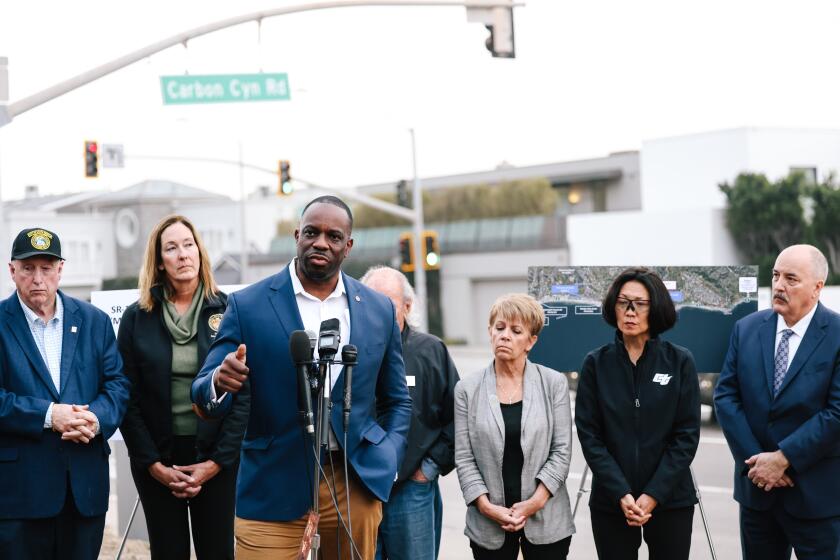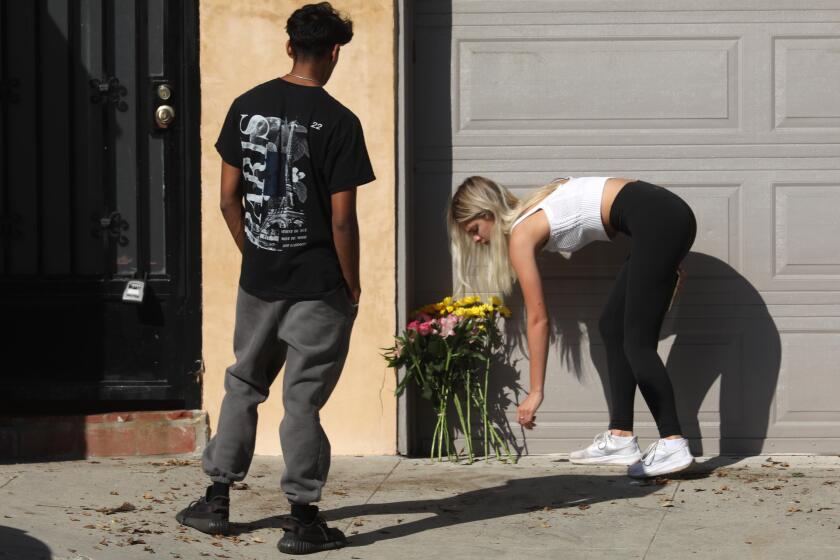Malibu gets a 3-officer CHP task force to patrol deadly stretch of PCH

- Share via
After the horrific Oct. 17 crash on Pacific Coast Highway that killed four Pepperdine students, the Malibu community pleaded with its City Council to do more to stop speeding drivers whose recklessness often ends in injuries and fatalities.
The city’s latest effort to improve safety on the scenic but perilous 21-mile stretch of PCH is to add a dedicated task force to patrol the roadway over the next year and a half.
In January, the City Council approved a contract with the California Highway Patrol to establish the three-officer unit to patrol Pacific Coast Highway within city limits. The contract will expire in June 2025.
Deadly crashes have plagued Malibu for decades. A Times analysis after the October crash found there were 170 deaths and serious injuries to drivers, passengers, cyclists and pedestrians between 2011 and 2023.
After an October crash that killed four Pepperdine students, safety upgrades are planned for the PCH in Malibu.
PCH is a state highway, so it falls under Caltrans jurisdiction, which limits the changes the city can make to the roadway. But in the last three months, Caltrans has begun construction on a new traffic signal synchronization project that allows the agency to remotely control traffic signals on the highway, synchronize their timing and adjust them to lower traffic speeds and reduce congestion.
In November, the Malibu City Council declared a local emergency, which allowed the city manager to quickly approve a short-term contract with the CHP to immediately bolster patrols. Those patrols are ending this month, just as the longer-term task force kicks in.
There are still projects in the pipeline. A $4.2-million Caltrans contract approved by the state in December will allow the agency to establish speed feedback signs and speed limit markings on pavement, replace safety corridor signs and enhance striping on curves.
After four young women were struck and killed by a car on Pacific Coast Highway, their friends shared warm memories amid their grief.
The California Highway Patrol stopped patrolling PCH in Malibu in 1991 when the city incorporated, and Malibu contracted for law enforcement with the Los Angeles County Sheriff’s Department. Now, the additional patrols are welcomed by city officials and law enforcement at a time when many in the community feel at their wits’ end.
“We’re always happy to have more enforcement, especially when we have ... speeding that endangers the community,” said Jennifer Seetoo, captain of the L.A. County Sheriff’s Department’s Malibu/Lost Hills station.
Seetoo told The Times on Tuesday that she believes the “three E’s, and that is enforcement, education and engineering,” are needed to make the highway safe.
The new CHP task force is an essential aspect of enforcement, Seetoo said, but she wants speed cameras, too.
In October, Gov. Gavin Newsom signed into law a speed camera pilot program, but Malibu wasn’t among the cities where cameras would be installed. State Sen. Ben Allen (D-Santa Monica) and Assemblymember Jacqui Irwin (D-Thousand Oaks), however, are working on legislation to get the cameras in Malibu, Seetoo said.
Meanwhile, traffic safety on PCH continues to be top of mind for residents and top of the agenda for council members.
At the most recent City Council meeting, residents who spoke said spreading awareness is vital in protecting the neighborhood.
“If this is a war on recklessness,” said one commenter, “we need to be targeting hearts and minds.”
Some suggested posting signs: “This place is worth going slow,” “Slow down, you’re already here,” “Locals can tell you’re a tourist by your speeding.”
Only Caltrans-approved signs can be attached to power poles, however. Councilmember Paul Grisanti suggested that businesses and homeowners along the highway allow large signs to be posted on their buildings to snag people’s attention.
Another commenter proposed that four volunteer motorists put signs on the backs of their cars emphasizing the speed limit and then drive side by side on each side of the highway.
The community’s passion on the topic is evident.
And, Seetoo told The Times, residents are cautiously optimistic.
After the death of 13-year-old Emily Shane — who was struck by a speeding driver as she walked along PCH in 2010 — “the community rallied and wanted change,” Seetoo said. “And nothing happened, and I feel like this is the first time that things are actually happening.”
Times staff writer Terry Castleman contributed to this report.
More to Read
Sign up for Essential California
The most important California stories and recommendations in your inbox every morning.
You may occasionally receive promotional content from the Los Angeles Times.












